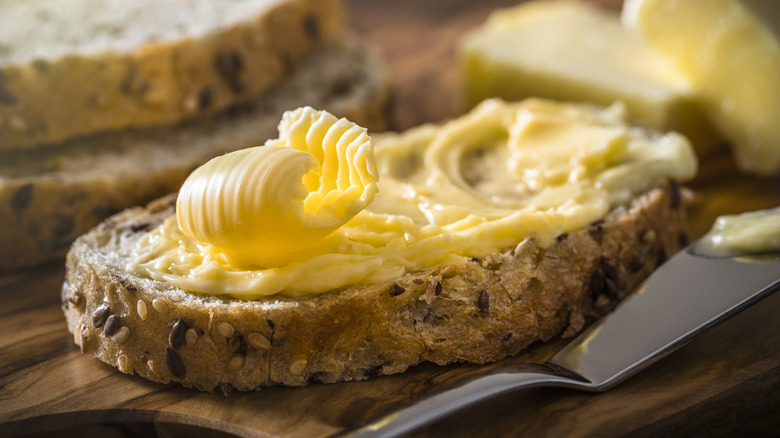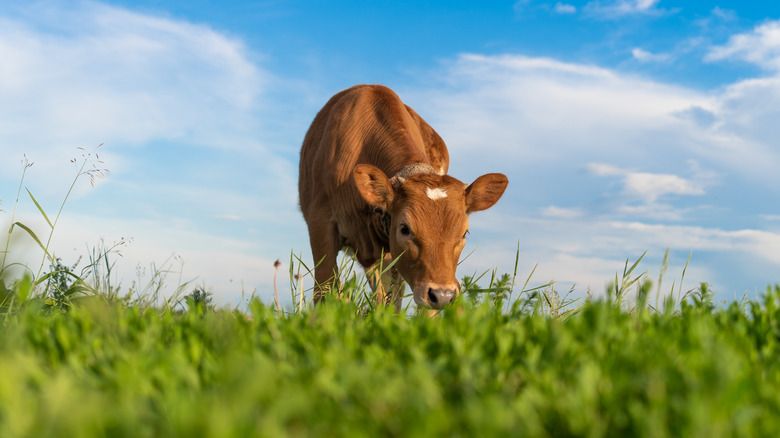This Country Consumes The Most Butter Worldwide
Nope, the most butter consumption in the world doesn't happen in France. While Europe (and France in particular) has historically taken the top spot, the 2022 crown went to none other than New Zealand, according to Statista. The nation's consumption for the year was a whopping average of 13.6 pounds per person! Coming in second was the European nation of Belarus, with 10.4 pounds of butter eaten per person. France didn't even make the top 15.
Butter consumption in New Zealand has been pretty consistent over the last five years, with each Kiwi taking in between 12.8 pounds and 13.3 pounds in one year. This means their butter behavior hasn't changed much at all. Butter is also part of British food traditions brought to New Zealand by 19th-century settlers and was sometimes regarded as a luxury in the nation's history.
New Zealand is also a top producer and exporter of butter, with diary exports hitting $13.4 billion and 30.4% of the nation's total exported goods in 2022. That year, it produced 480,000 metric tons of the spreadable gold, while Japan purchased $35 million of butter from New Zealand. But why is the country's butter so popular?
What's so special about butter from New Zealand?
Recently, consumers in New Zealand have become more interested in homegrown products, especially organic and natural ones. This, paired with increased home baking during COVID-19 lockdowns in the country, led to increased domestic butter sales.
What's more, most livestock living on the islands of this Pacific nation is grass-fed. Milk from grass-fed cows produces butter with a richer flavor, scent, and color than butter from grain-fed cows. Grass-fed butter is typically a much brighter and more saturated golden yellow than its counterpart. Its taste takes on a unique vegetal grassiness, compared to the sweeter, milkier flavor of butter from grain-fed cows and making it more interesting to buyers.
The flavor differences do not stem from the actual differences in the cow's diet. Both kinds of butter contain the same milk extracts, but the flavor compounds in grass-fed butter register at different levels. Grass-fed butter also has smaller fat globules and more unsaturated fat, rendering it smoother, softer, and easier to spread. It also melts at a lower temperature which lends a creamy sensation to the palate. And the icing on the cake? Butter from grass-fed animals may also have higher levels of healthy compounds like vitamins, omega-3 fatty acids, and beta-carotene (via Healthline), making New Zealand butter all the more attractive.

